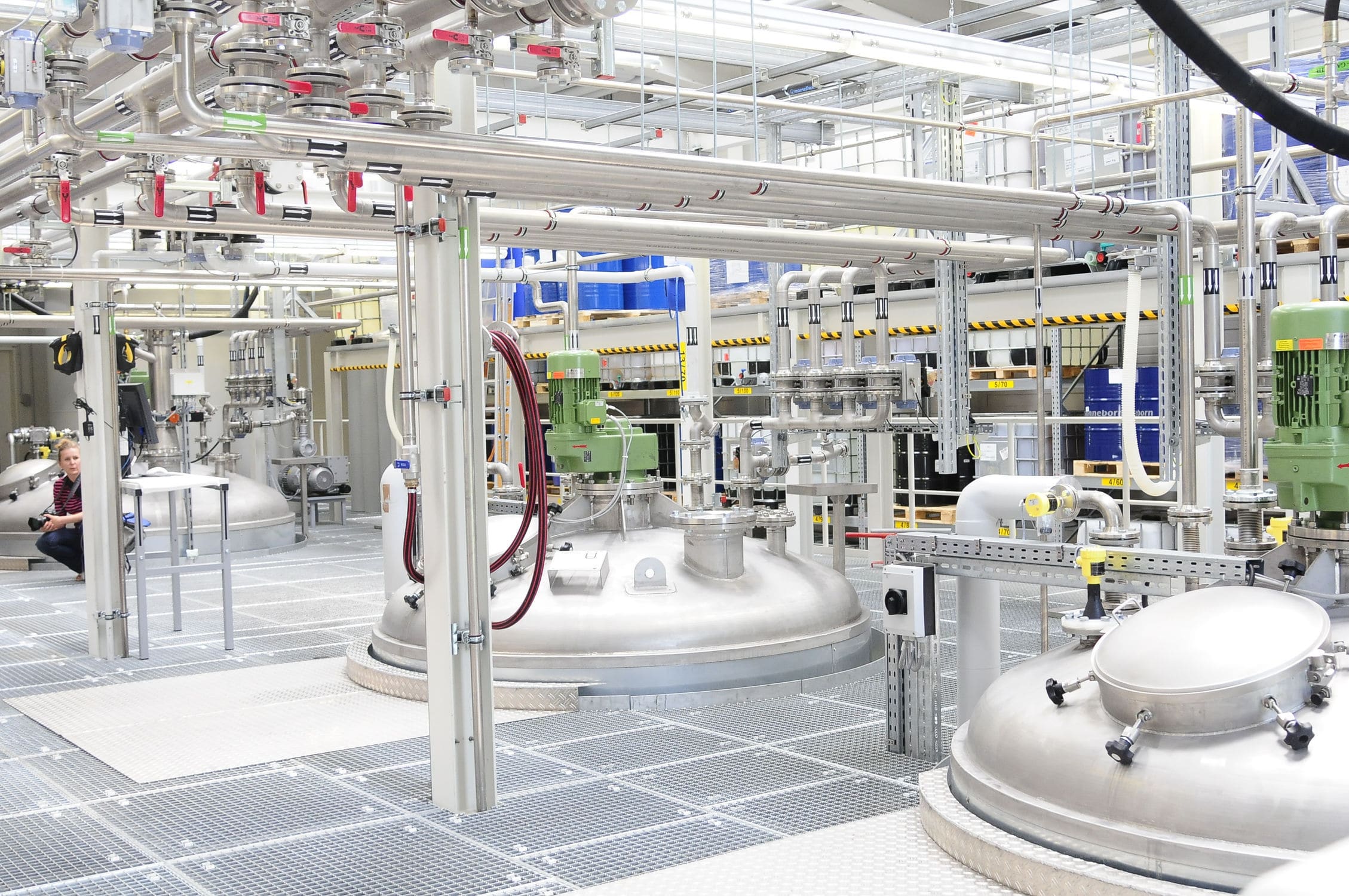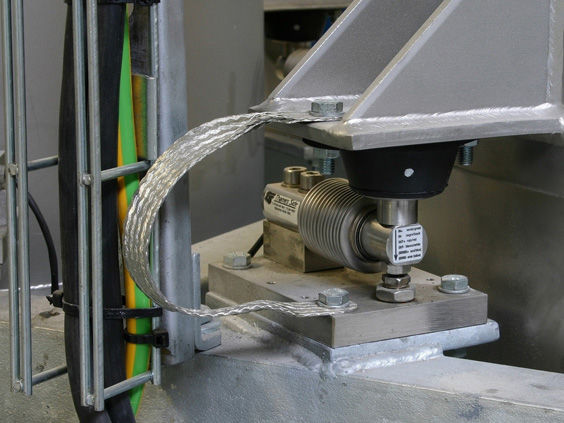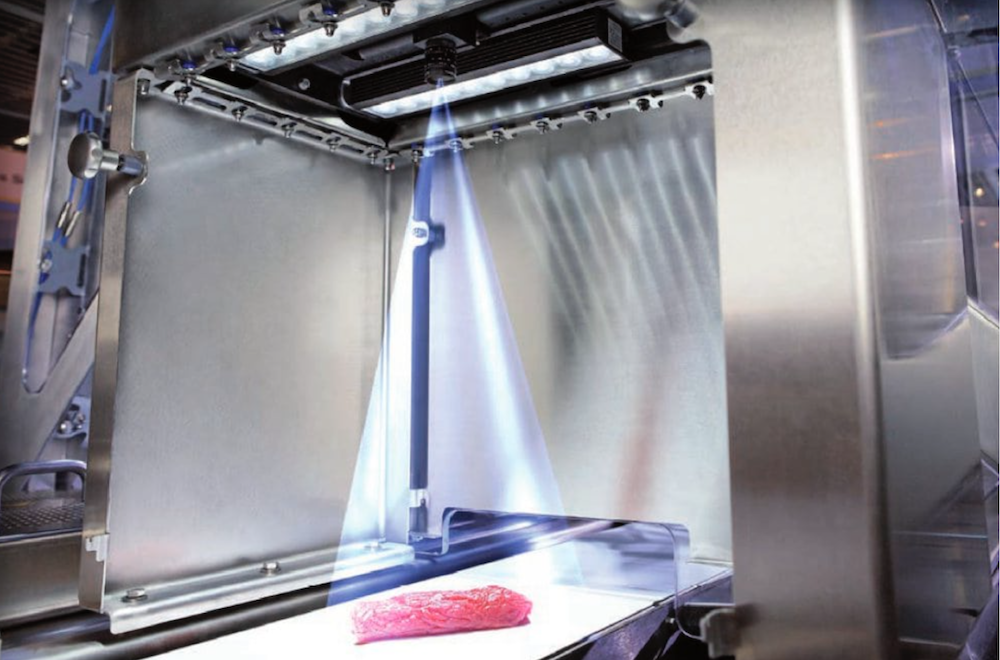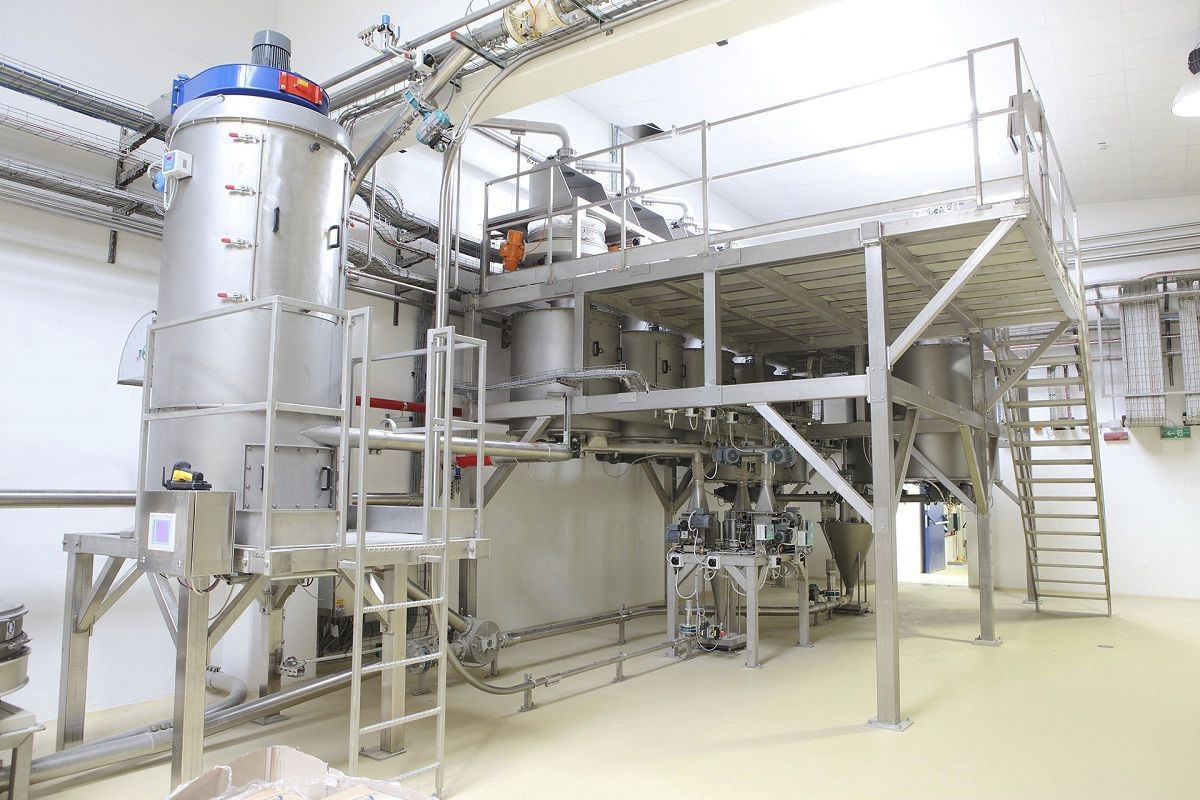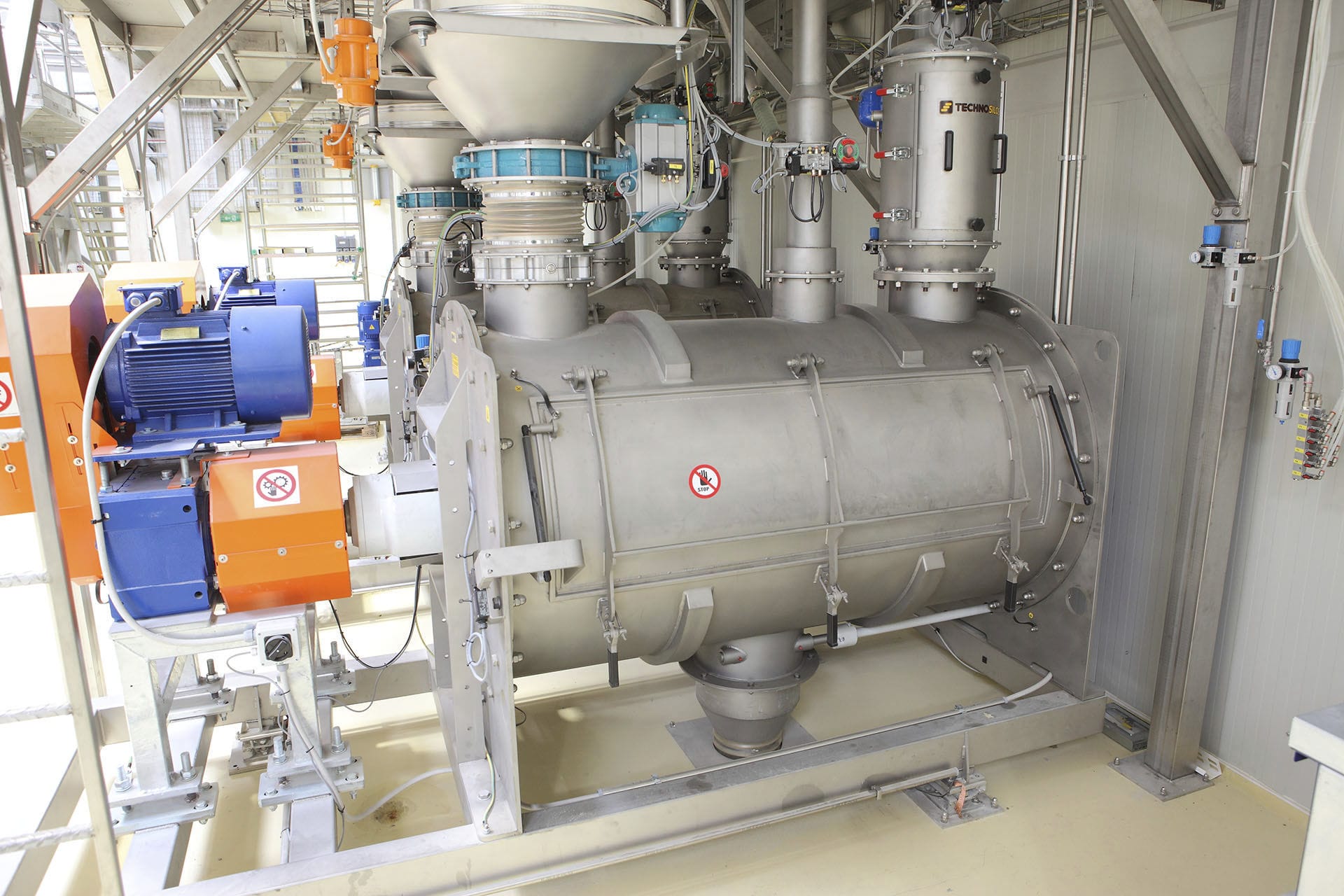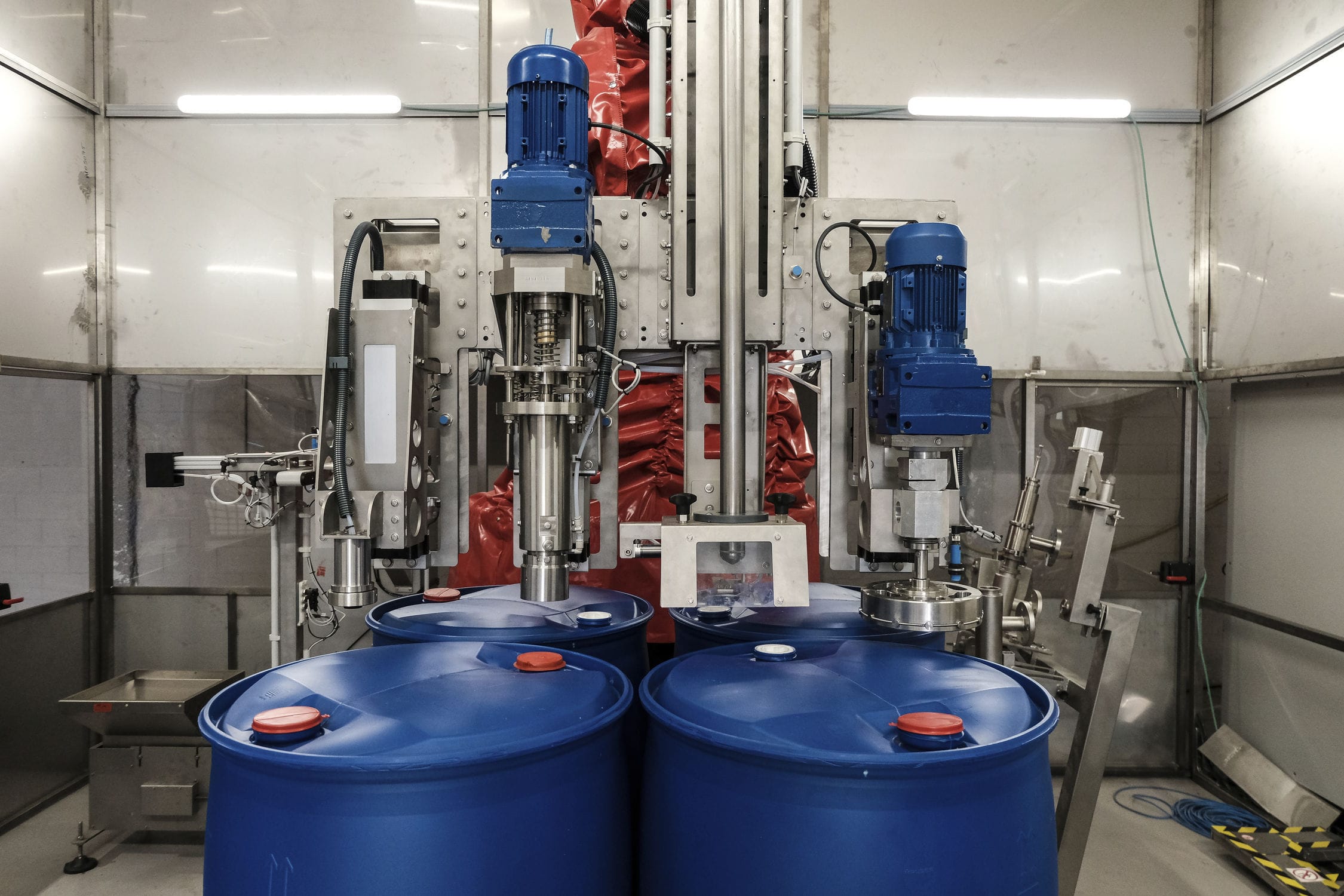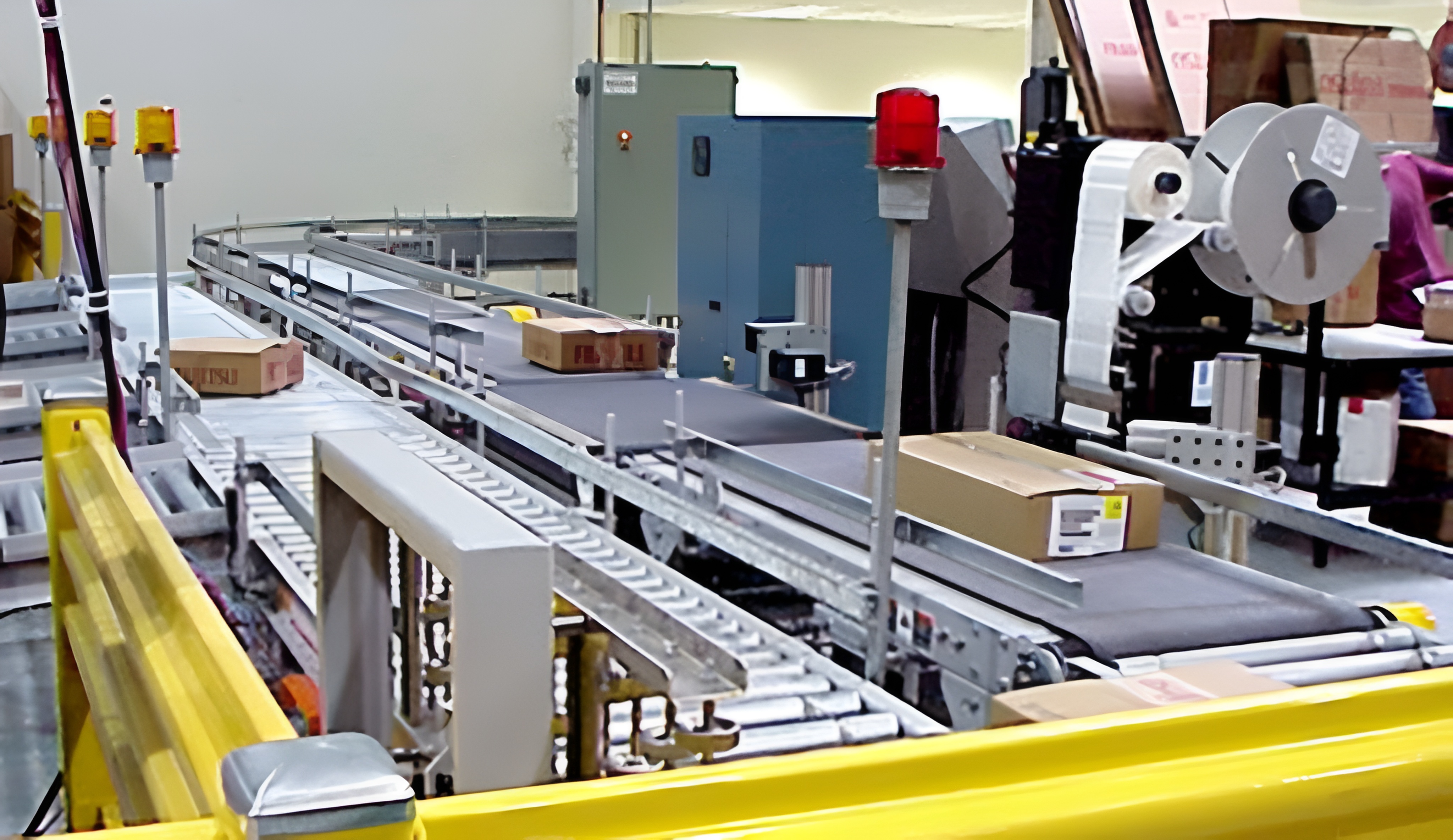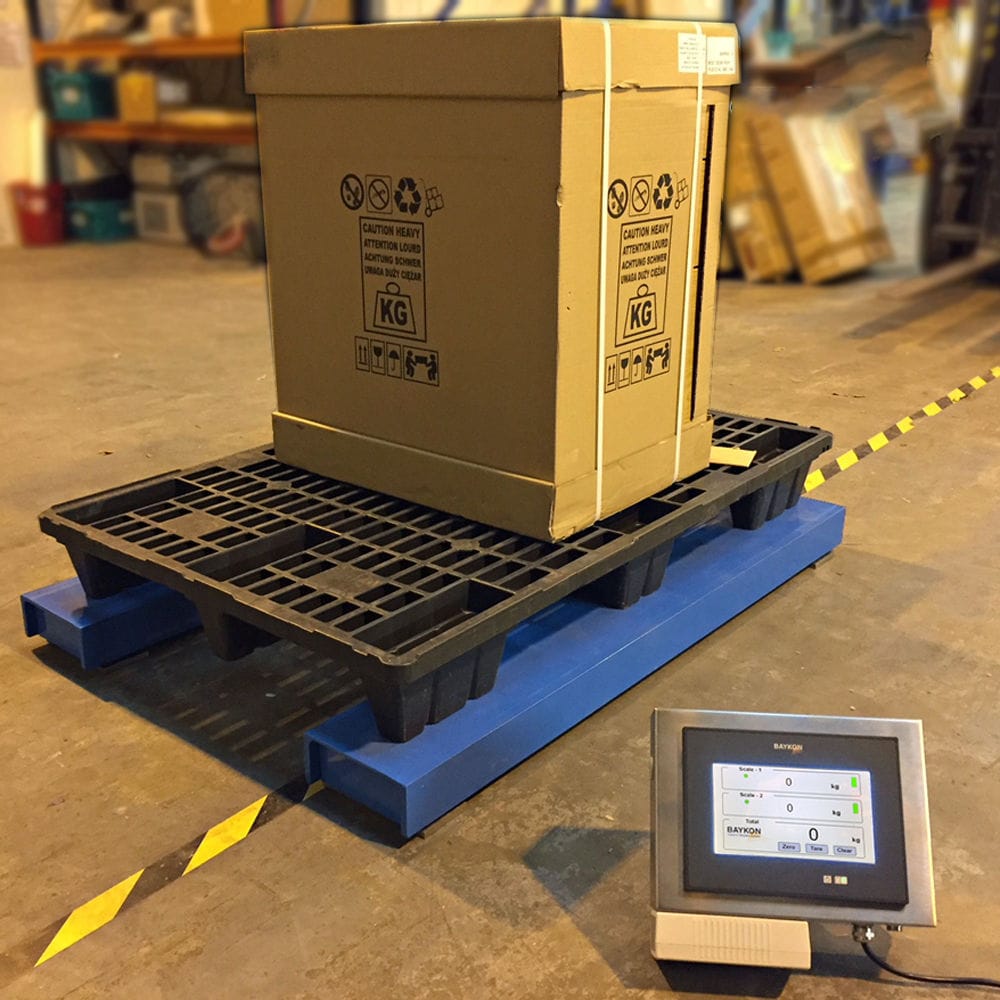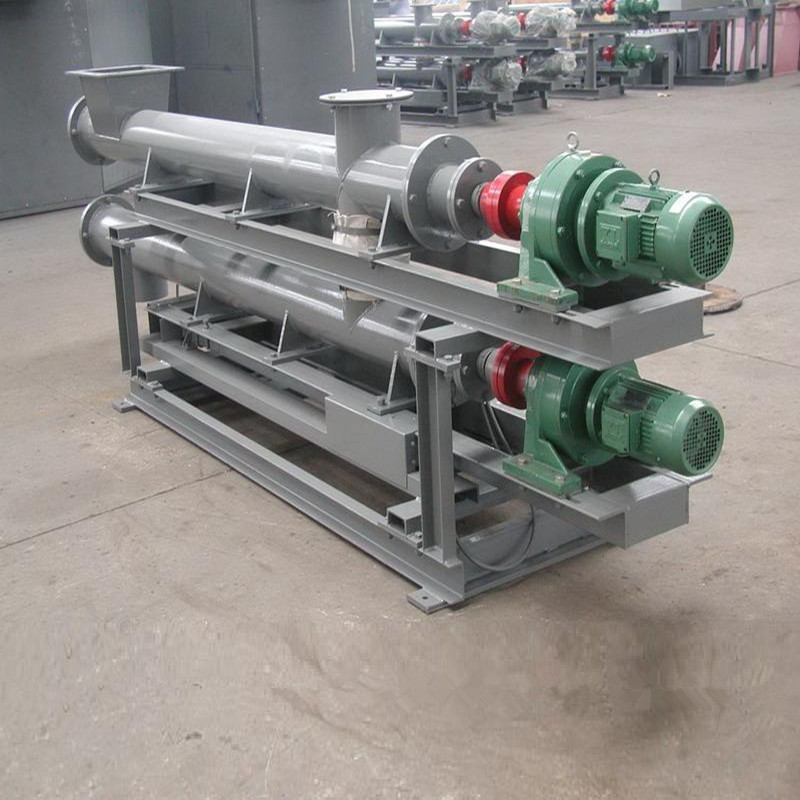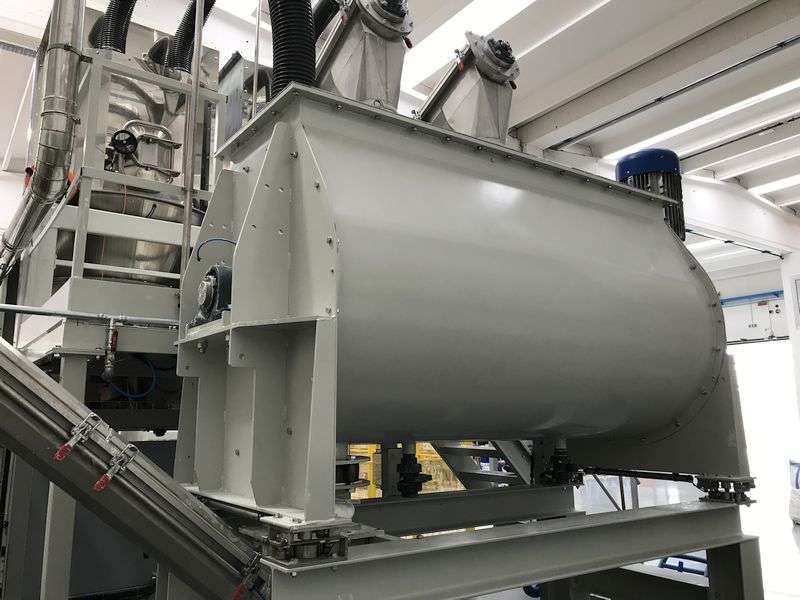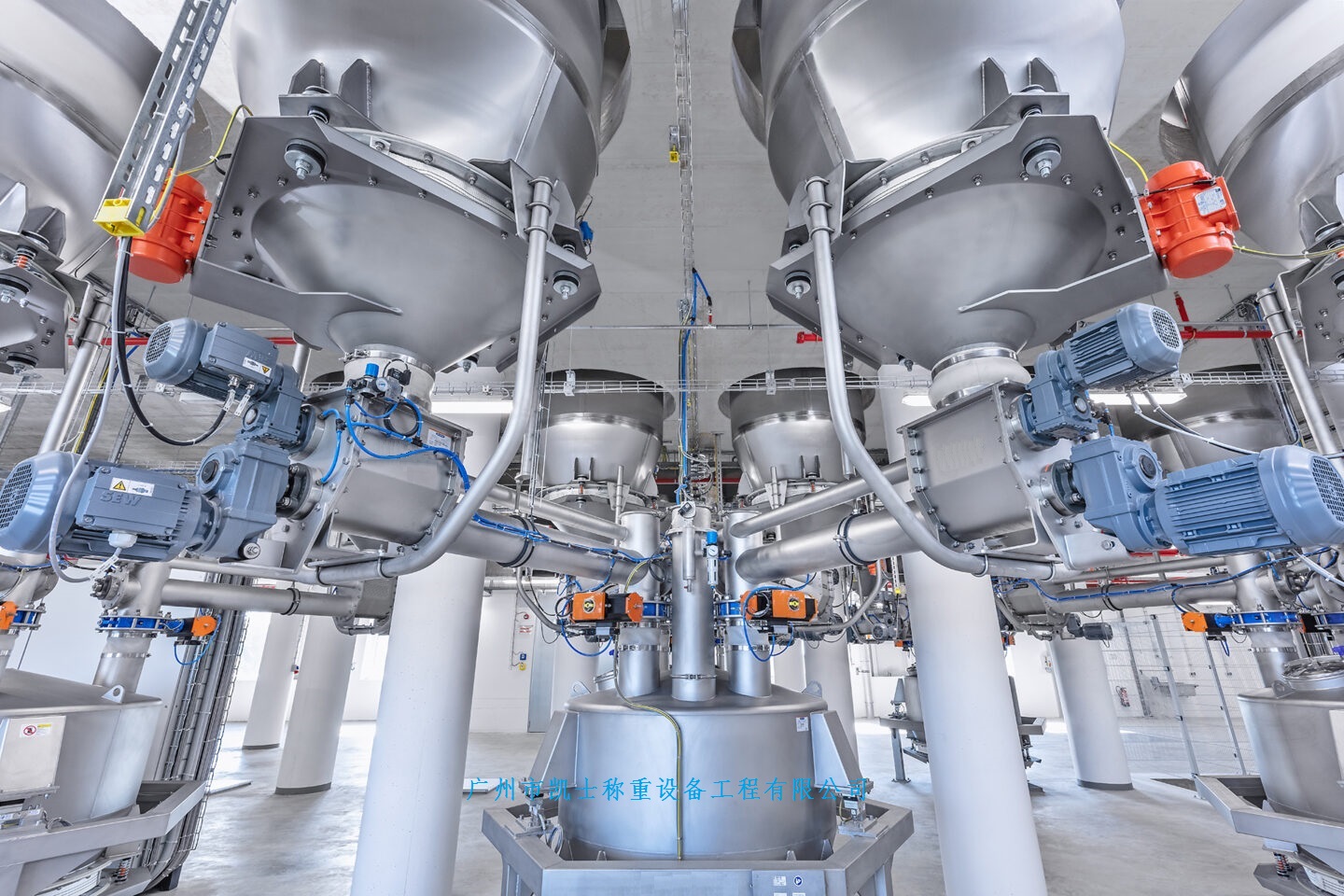

The weighing feeder is a device that provides the mass information of the material to be weighed. It mainly consists of a hopper scale, a load measurement and transmission device, etc. The volume of a hopper scale is generally 1.3 to 1.4 times the set volume of the material. It is connected to two weighing modules placed on the frame through a crossbeam fixed on it. Two discharge doors are hinged at the bottom. Under the action of the cylinder, opening them is for discharging materials, and closing them is for feeding and weighing.
 020-34563445
020-34563445The signal output by the weighing module of the weighing Feeder is processed by the SPU signal processing unit (consisting of signal amplification, filtering, voltage/current conversion and amplifier, power supply circuit for the weighing sensor, etc.), and then a 0-20mA current signal is sent to the load input interface of the weighing instrument. After being converted by the 12-bit AD chip, it is sent to the main unit. The rotational speed of the motor driven by the feeder is processed by the speed sensor through the serial port module of the weighing controller and then sent to the main unit. The host CPU calculates and compensates the collected load signal and speed signal to obtain the actual instantaneous flow rate. After comparing this flow rate with the given flow rate, it undergoes preset adjustment operation and PID operation. Then, according to the need, the D/A converter outputs one or more standard analog signals, with the signal range of 0 to 10V. This signal value is directly input into the control terminal of the frequency converter. By changing the rotational speed of the driving motor, the actual feeding amount can be quickly, accurately and stably tracked to the agreed flow rate. The weighing controller is divided into two control modes: on-site control mode and central control mode. The on-site control mode can be independently controlled by a single channel of the weighing instrument. The central control mode is that the industrial control computer in the central control room centrally controls the 1 to 8-channel speed-regulating scales. Alternatively, the 1 to 16-channel control board can be selected to control the 1 to 16-channel speed-regulating scales. It can control the given flow and the start and stop of the system, and the central control room receives the feedback signal sent back by the weighing instrument.
The weighing feeder is a device that provides the mass information of the material to be weighed. It mainly consists of a hopper scale, a load measurement and transmission device, etc. The volume of a hopper scale is generally 1.3 to 1.4 times the set volume of the material. It is connected to two Weighing modules placed on the frame through a crossbeam fixed on it. Two discharge doors are hinged at the bottom. Under the action of the cylinder, opening them is for discharging materials, and closing them is for feeding and weighing. If the structural design or manufacture of the hopper scale causes the geometric center and the center of gravity not to coincide, it will inevitably lead to the offset of the hopper scale, forming a pendulum structure, and the load measurement and transmission device will be difficult to measure accurate data. The load measurement and transmission device mainly consists of A load cell, a signal amplifier and an A/D converter. Due to its self-balancing ability, fast sampling speed and high accuracy, it is convenient for the computer to control the weighing process. However, in the design, it is necessary to take into account the zero drift, temperature drift and offset voltage caused by changes in factors such as temperature and time, as well as the impact on filling accuracy and speed due to the poor performance of any one of the load cell, signal amplifier and A/D converter.
The weighing feeder realizes the automatic quantitative filling of materials based on the output signal of the sensor. Its working process is divided into four stages: feeding, weighing, unloading and bagging. At the beginning of the weighing process, the controller controls the electromagnetic vibrating feeder to carry out both coarse and fine feeding simultaneously. The material falls into the hopper scale and is added to 90% to 95% of the rated weight within a short period of time. When the weight of the material in the hopper scale reaches the coarse feeding set value, the coarse feeding electromagnetic vibrating feeder stops operating, and the fine feeder continues to feed, entering the slow feeding stage, completing 5% to 10% of the predetermined weight. When the material quantity on the hopper scale approaches the set value, the fine feeder stops and the weighing process is completed. When the discharge switch is triggered, the controller opens the discharge door of the hopper scale, and the material falls into the packaging container, completing one filling cycle.




